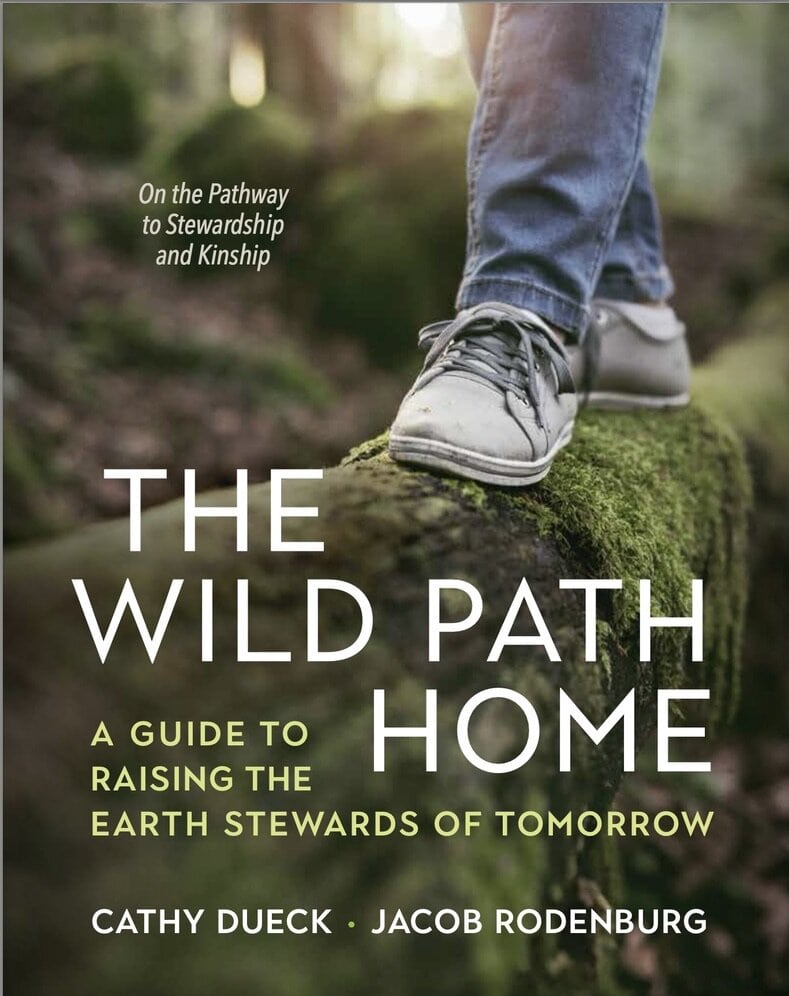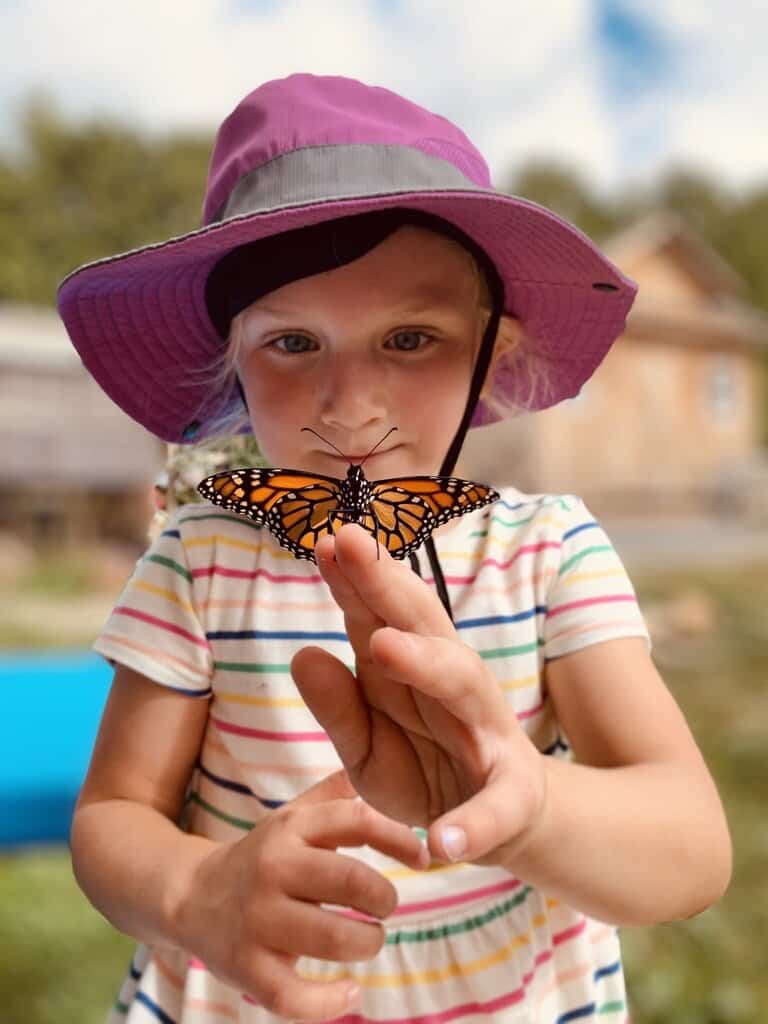New book by local educators is an invaluable resource for creative and impactful outdoor learning as well as a framework for transforming education
Peterborough Examiner – July 11, 2025 – by Drew Monkman
“Those who contemplate the beauty of the Earth find reserves of strength that will endure as long as life lasts.” – Rachel Carson (marine biologist and author)
More than ever, we need antidotes to the anxiety, depression, and disconnection experienced by so many young people today. Today’s child emerges into a world of strife, loss and fear – no more so than when it comes to what’s happening to the climate, to species diversity and abundance, and to wildlands everywhere. Regenerating life and a more stable atmosphere depends on many things, but maybe none more so than transforming our beliefs and principles about how to raise a child. Every child deserves to know and love nature in all its wonder. With proper guidance, children can realize that they ARE nature and have agency to transform the future.
“The Wild Path Home” —a beautifully crafted guide by award-winning, local environmental educators Jacob Rodenburg and Cathy Dueck—arrives as both a balm to soothe our anxiety and a blueprint for moving forward with joy and conviction. Grounded in the belief that nurturing a child’s relationship with nature is foundational to their well-being and to the planet’s future, this book offers a compelling framework for raising the Earth stewards of tomorrow.
Rooted in the authors’ groundbreaking Pathway to Stewardship and Kinship project, developed here in the Kawarthas, the book combines research-based insights, community wisdom, and field-tested activities. It’s written for anyone who cares about helping children grow in connection with the natural world—parents, grandparents, teachers, outdoor educators, and community leaders alike. It also presents a model of collaboration that can inspire and guide similar initiatives in cities and towns everywhere.
One of the book’s great strengths is its accessibility. You can simply open to a specific age group, identify a stewardship goal (called a landmark), and choose from hundreds of easy-to-implement, seasonally adaptable activities. Designed with the time-pressed educator or caregiver in mind, it requires minimal preparation and few materials—an invaluable feature in today’s busy world.
Visually, the book is a joy to navigate. Clean design, colour-coded sections, inspiring photos, and quotes from educators, parents, and renowned thinkers all contribute to its appeal and usability.

A Closer Look
The introduction sets the stage by asking us to simply imagine. “Imagine a world where all children grow up respecting themselves, each other, and the natural world around them. Imagine a society where health is the driving force – mental health, physical health, and environmental health – shaping the way kids are raised and guiding the priorities of our communities. Imagine leaders from around the world making environmental literacy a key focus for all education, inspiring a deep sense of caring and belonging in children and youth.”
The authors then go on to explore why this work is so urgent now, the benefits of unstructured outdoor play, the role of mentorship and Indigenous wisdom, and ways to help young people engage with the realities of climate change.
From this grounding, Rodenburg and Dueck outline a set of core stewardship principles—including wonder, gratitude, interconnectedness, and respect for Indigenous knowledge—which inform 30 age-appropriate landmarks. These landmarks, tailored from birth to age 17, guide the child’s journey toward environmental responsibility and kinship with the Earth.
Each landmark is presented with a clear rationale (Why?), practical steps (How?), and thoughtful Climate Change Connections. For example, Landmark 11 (Ages 6–7) invites children to “find three ways to recognize and enjoy the change of each season.” The rationale emphasizes emotional connection and resilience, while the climate context highlights shifting seasonal patterns. Activities might include making mushroom prints in fall, tracking shadows in winter, or weaving wildflowers in summer. They’re simple, joyful, and require little more than curiosity and presence.
When my grandchildren (ages 6 and 9) visited recently, we explored Landmark 12 (“Meet the friends in your ‘neighbourwood'”) and Landmark 14 (outdoor recreation that doesn’t require electricity). We had a wonderful time investigating creatures under logs (aka “Basement Windows”) and stargazing with the SkyView app. These experiences were not only fun—they deepened our sense of connection to place and to each other.
Beyond Activities
More than a collection of nature-based activities, The Wild Path Home offers a vision for cultural transformation—a way to reimagine childhood grounded in relationship, reciprocity, and reverence for life. The authors call on us to support the development of whole children in whole communities—blending outdoor learning with strong, intergenerational connections.
The final chapter, “It Takes a Village”, serves as a practical guide for communities wishing to launch their own Pathway to Stewardship and Kinship programs. It includes strategies for mobilizing local talent, partnering with Indigenous groups, measuring success, and accessing funding. While the model was piloted in Peterborough, its adaptable structure makes it relevant across communities and regions.

Final Thoughts
In The Wild Path Home, Rodenburg and Dueck have gifted us a luminous, practical, and hopeful guide to mentoring the next generation of Earth stewards. Its joyful activities, grounding in respect and relationship, and emphasis on community make it an essential resource for those who care about the future of our children—and our planet.
Helping children fall in love with nature is not just a gift to them. As this book beautifully reminds us, it is also an act of healing for the Earth itself.
While the official print date from New Society Publishers is September, Jacob Rodenburg has advance copies of The Wild Path Home which can be purchased by contacting him at jrodenburg@campkawartha.ca.
Jacob Rodenburg is the executive director of Camp Kawartha, an innovative local summer camp and outdoor education centre. Cathy Dueck has worked in community-based environmental education for over 35 years. She served as lead writer, researcher, and coordinator for the Kawartha Region’s Pathway to Stewardship and Kinship project.